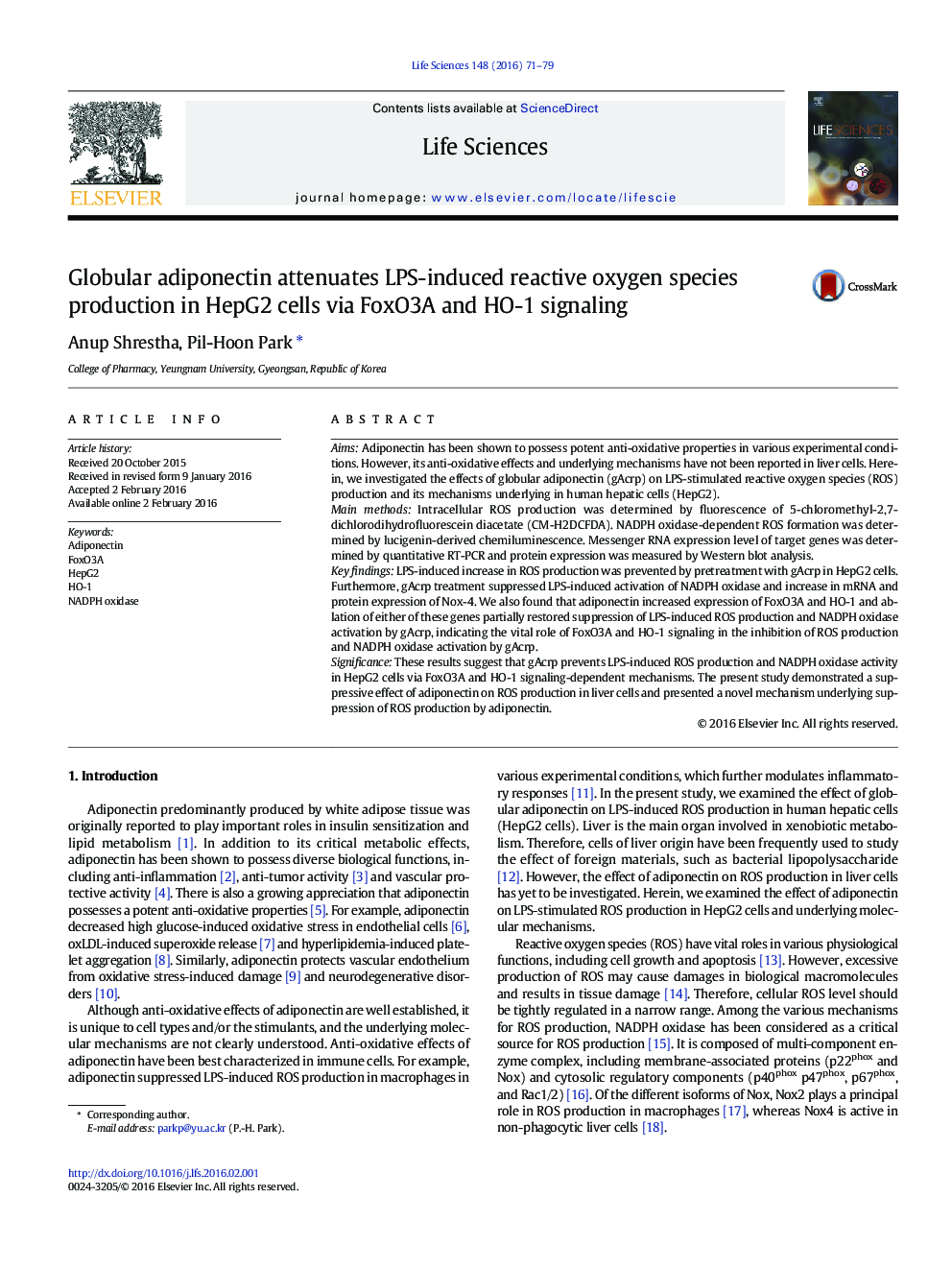| Article ID | Journal | Published Year | Pages | File Type |
|---|---|---|---|---|
| 2550737 | Life Sciences | 2016 | 9 Pages |
AimsAdiponectin has been shown to possess potent anti-oxidative properties in various experimental conditions. However, its anti-oxidative effects and underlying mechanisms have not been reported in liver cells. Herein, we investigated the effects of globular adiponectin (gAcrp) on LPS-stimulated reactive oxygen species (ROS) production and its mechanisms underlying in human hepatic cells (HepG2).Main methodsIntracellular ROS production was determined by fluorescence of 5-chloromethyl-2,7-dichlorodihydrofluorescein diacetate (CM-H2DCFDA). NADPH oxidase-dependent ROS formation was determined by lucigenin-derived chemiluminescence. Messenger RNA expression level of target genes was determined by quantitative RT-PCR and protein expression was measured by Western blot analysis.Key findingsLPS-induced increase in ROS production was prevented by pretreatment with gAcrp in HepG2 cells. Furthermore, gAcrp treatment suppressed LPS-induced activation of NADPH oxidase and increase in mRNA and protein expression of Nox-4. We also found that adiponectin increased expression of FoxO3A and HO-1 and ablation of either of these genes partially restored suppression of LPS-induced ROS production and NADPH oxidase activation by gAcrp, indicating the vital role of FoxO3A and HO-1 signaling in the inhibition of ROS production and NADPH oxidase activation by gAcrp.SignificanceThese results suggest that gAcrp prevents LPS-induced ROS production and NADPH oxidase activity in HepG2 cells via FoxO3A and HO-1 signaling-dependent mechanisms. The present study demonstrated a suppressive effect of adiponectin on ROS production in liver cells and presented a novel mechanism underlying suppression of ROS production by adiponectin.
